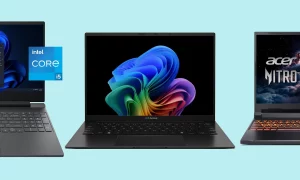What Qualcomm’s new Snapdragon chip may mean for Galaxy S9


Your next Android smartphone is about to get a lot smarter.
Qualcomm on Wednesday detailed its upcoming Snapdragon 845 processor, which will likely power most high-end Android phones launching in 2018. The chip boasts improved image- and video-capture abilities, smarter artificial intelligence features, “lightning-fast connectivity,” “vault-like security,” and better performance and power efficiency.
In other words, the rumored Galaxy S9 could let you shoot more true-to-life video and photos, use a smart assistant to analyze the images, upload them quickly and keep them secure on your phone. You’ll be able to do more, a lot faster — and with better battery life.
Qualcomm worked to update “the features that matter to you, which is how fast is your connection to the internet, how long is your battery life, how fast is your performance, how good is your display, how good is screen resolution,” Cristiano Amon, the executive vice president of Qualcomm’s chip business, said in an interview Wednesday. “Then by order of magnitude, how good is your camera experience?”
Qualcomm is hosting a tech summit this week in Maui, Hawaii, to detail its newest mobile chip and to show off some of the products running on its processors. The world’s biggest wireless chipmaker, Qualcomm is facing a battle to survive. The company counts Apple, Samsung and most of the world’s largest phone makers as its customers, but it’s also fighting a fierce legal battle against Apple.
Apple, Samsung and others also have been working on their own processors and partnering with Intel to reduce their reliance on Qualcomm’s wireless chips. At the same time, rival Broadcom is attempting to buy Qualcomm.
The Snapdragon 845 will be key for Qualcomm to maintain its position as the world’s biggest mobile chip designer. Chinese handset maker Xiaomi said Tuesday that its next flagship device, the Mi 7, will use the Snapdragon 845. It’s likely that some models of Samsung’s expected Galaxy S9 will also have the processor, as will LG and other Android handsets, though the companies haven’t yet confirmed that. Samsung told CNET that it doesn’t “have anything to share right now.”
“We focused on blending user experience with innovation,” Keith Kressin, Qualcomm senior vice president of product management, said during a keynote address Wednesday.
Better camera and video shots
The biggest change to the kinds of photos and video you’re shooting is this: the Snapdragon 845 is the first chipset to record 4K Ultra HD premium video.
What that means is way more natural color — you see up to 64 times more shades for a total of more than 1 billion colors. You also get 97 percent wider color gamut, which brings the videos of your winter vacation new colors you wouldn’t have been able to capture before.
You know those lines of color you sometimes get in a sunset or sunrise shot, where you can almost see different bands interrupting what should be a smooth gradient? This standard claims to eliminate them all. Read more about the Snapdragon 845’s brighter, more realistic video here.
Qualcomm also demoed a neat feature that essentially plops a tiny video into part of your still portrait. So imagine a fish swimming around a bowl while the rest of the picture keeps still. That kind of mode could definitely make waves for the first phone to feature it.
What makes it all possible is the Spectra 280 image signal processor, which also helps reduce noise in photos, making for smoother still images.
Don’t expect to see much higher camera megapixels on phones running on Snapdragon 845: Qualcomm continues to cap sensors at 32 megapixels (the highest a phone maker can go while using the chip). Other specs include 30fps photos with zero shutter lag. You can record high-performance content up to 16MP at 60 frames per second, and capture slow-motion video at 720p at 480 frames per second.
Face unlocking like the iPhone X’s Face ID
It’s up to the phone makers whether they use it, but Snapdragon 845 supports 3D face mapping along the lines of Apple’s Face ID scanning in the iPhone X.
While Apple’s system uses 30,000 dots of infrared light to map your face, Qualcomm’s chip uses up to 50,000 dots. That means Android phone makers for the first time will have the opportunity to counter Apple at the feature it pioneered in phones.
Chief Apple rival Samsung could be one of the first to jump on board. Its phones, like the Galaxy S8 and Note 8, already use iris unlocking and face unlock in addition to fingerprint, password, pin and pattern unlocking.
However, iris scanning can be fooled more frequently than 3D face mapping (one failure in half a million, versus one in a million), and the 2D face unlocking that Samsung currently uses isn’t secure enough for mobile payments.
Samsung and other Android rivals like LG, Motorola and OnePlus, can take the wind from the iPhone X’s sails, while keeping fingerprint reading as a backup option, something the iPhone X lacks.
Faster all around, with longer battery life
Thirty percent greater power efficiency and 30 percent faster graphics performance. That’s the message Qualcomm hammered home as benefits that Snapdragon 845 will bring, especially when it comes to activities that drain resources, like video recording, playing games and using VR and AR.
Because you’ll drain your battery slower on these big-ticket activities, your phone should last longer on a single charge. You also have Qualcomm Quick Charge 4+ to top up your device even faster.
5G data speeds and better Wi-Fi
Carriers don’t have 5G networks yet, but when they do, phones running Snapdragon 845 will be there to take full advantage.
Qualcomm has Wi-Fi speed covered, too. Have you ever been so annoyed while waiting to connect to a Wi-Fi network that you just give up and burn through your data instead? Improvements here mean you’ll be able to connect to a network up to 16 times faster than before.
Faster download speeds mean you can download a 3GB movie in under three minutes.
Better AI for a smarter phone
We find AI everywhere in phones, from virtual assistants to devices that try to learn your behavior and anticipate what you want. Expect to see more of it in 2018’s phones.
Play a game and your phone might ask if you’d like to increase your difficulty level. Open a fitness app and it might coach you to try a new routine or calculate insights.
Artificial intelligence capabilities are three times better than the previous generation, Qualcomm said, and creep up in the camera, too, letting you do things like create a bokeh effect — with the subject in focus and the background blurred — using only one camera lens instead of two — like on the Google Pixel 2. (Apple’s iPhones and others create a bokeh using two camera lenses).
Wireless earbuds get 50 percent more efficient
Bluetooth 5 support means you can directly broadcast from your device to multiple devices, like speakers and wireless earbuds.
So imagine broadcasting HD-quality streaming music to a network of wireless speakers. Or maybe it’s a tour guide talking into an app that reaches a large group on multiple headsets.
Or, if you use wireless earbuds, it means battery savings of up to 50 percent, since, with Bluetooth ear buds currently on the market, sound is broadcast to one ear bud that then shares it with the other.
“One ear bud is doing double the work,” Keith Carson, senior director of product marketing, said Wednesday during a presentation.
The phone makers will set the limit for how many devices you can broadcast to. Qualcomm says there’s no technical upper limit on its end.
Dual-SIM users get a break
Dual-SIM phones running Snapdragon 845 will be on equal footing.
As it stands now, the second SIM is relegated to 2G or 3G, but the new Qualcomm chip makes it possible to use the fastest LTE available on either SIM — one at a time, of course — as well as Ultra HD Voice where available.
(Ultra HD Voice gets you better coverage and quality. When you go deep in a building and have only one bar, you’ll have better than average audio quality for that level.)
More secure
Security also got a boost in the Snapdragon 845. Qualcomm’s new “secure processing unit” acts as a sort of vault or island to keep your biometrics — including fingerprint, iris, voice and face — and other sensitive information safe. The secure processing unit has its own brains, memory, crypto engine to sign and decrypt information, random number generator and power island.
“If code running on other parts of the platform is trying to attack or get information, the secure processing unit can essentially shut that off,” Sy Choudhury, senior director of product management, said during a presentation Wednesday.










